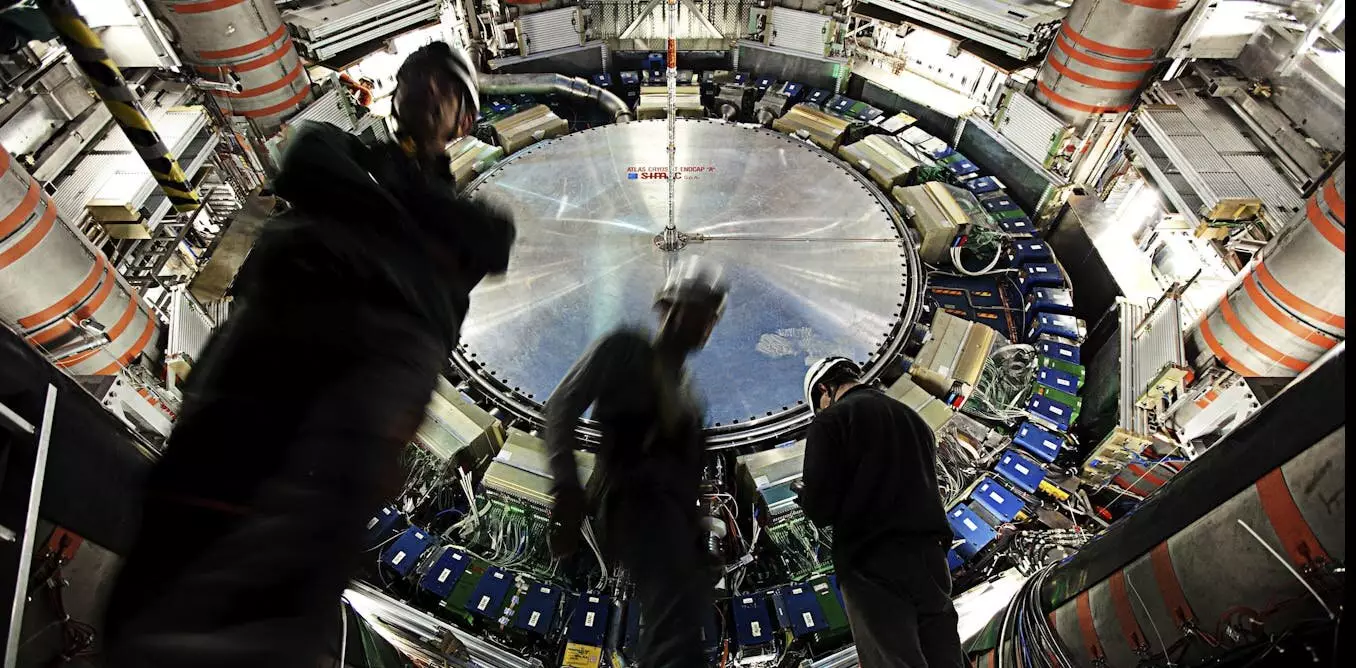Quantum entanglement is one of the most enigmatic phenomena in physics, challenging our classical understanding of separation and connection. At its core, entanglement suggests that pairs of particles can be intrinsically linked, regardless of the distance that separates them. This interplay creates a scenario where the measurement of one particle instantaneously influences the state of another, even when they are light-years apart. The best-known instances of entanglement involve photons, the fundamental constituents of light, but recent experiments have unveiled this phenomenon in other realms of particle physics, such as in the interactions of top quarks, which are much heavier particles.
The Large Hadron Collider (LHC) in Geneva, renowned as the world’s largest particle accelerator, has been pivotal in advancing our understanding of particle physics. Recently, researchers associated with the ATLAS collaboration made groundbreaking observations of entanglement among pairs of top quarks, as documented in a paper published in *Nature.* This discovery underscores the vast potential of exploring entanglement beyond light particles and in the context of heavier, more complex systems.
Traditionally, our perception of objects is binary: we categorize entities as either separate or connected. However, quantum physics challenges this dichotomy. In quantum mechanics, entanglement defines particles that are neither entirely isolated nor conventionally linked. The mere act of measuring one part of an entangled pair provides insight into the other, creating a surprising connection across distances. The phenomenon has been dramatized and popularized in various media, illustrating mankind’s growing fascination with concepts that straddle science and fiction.
Top quarks are particularly fascinating due to their immense mass—the heaviest of all known elementary particles, weighing a staggering 184 times that of a proton. Theoretical inquiries focus on why the top quark has such a large mass and what this signifies for our understanding of fundamental forces and particles in the universe. The large-scale energies involved present unique avenues for researchers: could the top quark serve as a gateway to new physics beyond our current models?
The potential links between mass, force, and quantum behavior present myriad avenues for investigation. This entanglement discovery provides a new experimental bedrock, increasing our understanding of how top quarks interact and behave on a quantum level. Although this knowledge does not readily translate into everyday technology, it may hold implications for future advancements in quantum computing and other as-yet-unforeseen technologies.
Despite the wonders of entanglement, researchers face significant challenges. Quantum systems are notoriously delicate; maintaining their entangled state requires carefully controlled conditions, often involving ultracold environments to minimize disturbances from external interactions. In studying high-energy particles like top quarks, researchers walk a fine line between harnessing their properties and the inevitable complexities that arise from their mass and energy.
As active investigations continue, physicists must remain cautious regarding the stability of their experimental setups. The LHC provides a unique environment conducive to study due to the sheer scale and energy levels it operates under. However, it is vital to recognize that the observations made will not lead to practical consumer technologies but rather serve as vital knowledge for the ongoing inquiry into quantum behavior.
While the foundation of quantum mechanics teaches that entanglement is prevalent, it simultaneously illustrates a precarious nature. The recent observations of entangled top quarks at the LHC contribute to our expanding comprehension of quantum phenomena, including what quantum entanglement may reveal about the laws of the universe.
As the physics community delves deeper into the complexities of particles like top quarks, the hope is that these studies will yield valuable insights that could, in the long term, reshape our understanding of everything from particle interactions to the very fabric of reality itself. The investigation of entanglement in heavier particles not only enriches our knowledge base but could also eventually guide us toward groundbreaking innovations in quantum technologies, reinforcing the necessity of exploring the boundaries of what we know in search of the unknown.
With each new discovery, the enigma of quantum entanglement deepens, urging us to keep questioning, exploring, and expanding our understanding of one of nature’s most fascinating laws. The journey into the realm of quantum physics is ongoing, illuminating the path for future scientists and philosophers alike.


Leave a Reply